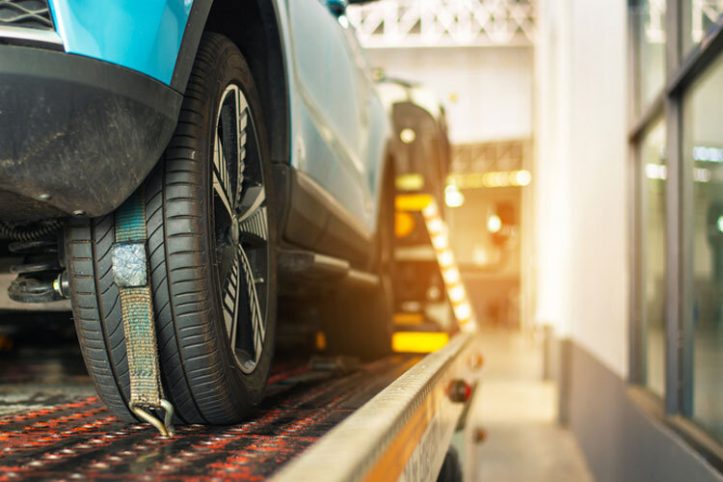
Tire Pressure
If you’re planning a Christmas road trip, your itinerary might look like this: pack your luggage, wrap the gifts, buy road foods, and organize enough activities to keep everyone entertained during the journey.
Before you leave, you’ll probably have a cup of coffee and fill up on gas. However, many tourists fail to check their tire pressure before getting on the road, which has proven to be a costly mistake.
Tire Pressure Mishaps
Two males were headed to work in a Nissan Pathfinder in Las Vegas in 2008 when their right rear tire failed owing to tire pressure. As a result, the motorist lost control and drifted into the center median after the tire tread fully split itself from the tire.
The driver then attempted to re-enter the highway by overcorrecting but instead flipped the SUV, killing his passenger in the process.
Tires are necessary for keeping our vehicles on the road safely. Unfortunately, our vehicles can become unmanageable when a tire fails or blows out, resulting in severe and tragic accidents.
Tire-related crashes resulted in 738 motor vehicle fatalities in 2017, according to the National Highway Transportation Safety Administration (NHTSA), and almost 11,000 others are injured each year.
Issues With TPMS
Low tire pressure is the most prevalent cause of tire failure on the road. Unfortunately, most people do not check their tire pressure regularly, especially when going to the store or work.
Although the number of tire-related crashes has decreased with the advent of the automatic tire pressure monitoring system (TPMS), these systems are not always reliable. As a result, they might mislead drivers about how safe their tires are.
Before the advent of TPMS, drivers had to rely on routinely monitoring their tire pressure or listening/feeling for symptoms of low tire pressure, both of which were useless in lowering the risk of an accident.
In most automobiles, there are two types of TPMS:
- Direct TPMS — utilizes sensors fitted on the wheels to monitor tire pressure and informs the driver if the pressure falls below 25%.
- Indirect TPMS — When low tire pressure is detected, the indirect TPMS works with your vehicle’s Antilock Braking System speed sensors to cause tires to roll at a different speed.
Both of these systems have aided in reducing tire-related car accidents, although they are not without flaws. TPMS systems have several issues that might mislead drivers about their tire status, including:
- Due to dead or low batteries, TPMS sensors can stop working or work sporadically
- Antenna or wiring problems might cause sensor signals to fail
- Due to power, wiring, or electronic issues, the TPMS system as a whole may stop working
- The system may not recognize tires that have just been serviced or rotated correctly
- Sensors could fail due to corrosion on the internal valve system
Sensors that are too old or worn out to function correctly are the most typical cause of TPMS failures. These sensors have a 5- to 7-year lifespan, but they may last even shorter if your automobile has a lot of miles on it.
Accident Risks Rise During Holiday Weekends
On a holiday weekend, the highways are always a dangerous place to be. To make matters worse, AAA predicts record-breaking travel numbers this holiday season, with 112.5 million Americans going more than 50 miles from home for Christmas and New Year.
Tire failure on congested holiday roadways can put drivers and passengers in danger in two ways:
- If you are traveling and a tire blows out, your automobile may collide with others at high speeds, causing many cars to lose control.
- If you park on the side of the road, your car and family are at risk of side-swipe accidents, which are particularly dangerous on motorways and parkways.
Furthermore, holiday traffic and a spike in accidents may create a delay in the arrival of first responders and emergency services. Not to mention the fact that winter brings exceptionally bad weather, which prolongs the wait as well as the possibility and magnitude of a tire-related disaster.
How Can Low Tire Pressure Accidents Be Avoided?
The majority of tire-related incidents can be avoided entirely with a little pre-trip maintenance. Before driving, drivers can assist prevent accidents caused by low tire pressure by following these safety tips:
- At least once a month, or before a trip, check your tire pressure
- Use air pumps that automatically read the pressure as they fill and stop
- Replace TPMS sensors every 5 to 7 years or every 60,000 to 80,000 miles
- Learn how to read your low tire pressure light
- Don’t ignore the tire pressure light even if you just checked the pressure
- If your tire pressure is low, don’t blame it on the weather. Even if the temperature is cold, maybe your tires were low, to begin with
What To Do When You Have A Flat Tire
Tires don’t always comply with our journey, no matter how well we prepare. If you suffer a tire rupture while driving, follow these tips from Travelers to manage the situation safely:
- Maintain your composure
- Make certain you have a firm grip on the steering wheel
- Slow down gradually rather than hitting the brakes hard
- When you reach a safe speed, pull over to the side of the road
- Only get out of the car when you’re no longer in danger
- Turn on the emergency flashers
- If changing your tire is not safe, call for roadside help
The Las Vegas Car Accident Attorney’s zealous crew of personal injury lawyers is prepared to fight for you if you or a loved one has suffered a severe injury as a consequence of a car accident. To learn more about your choices for seeking justice, contact us today for a free case evaluation.
The Las Vegas Automobile Accident Attorney’s proactive team of personal injury attorneys is ready to fight for you if you or a loved one has suffered a catastrophic injury as a consequence of a car accident. To learn more about your choices for seeking justice, get in touch with us today for a free case evaluation.


